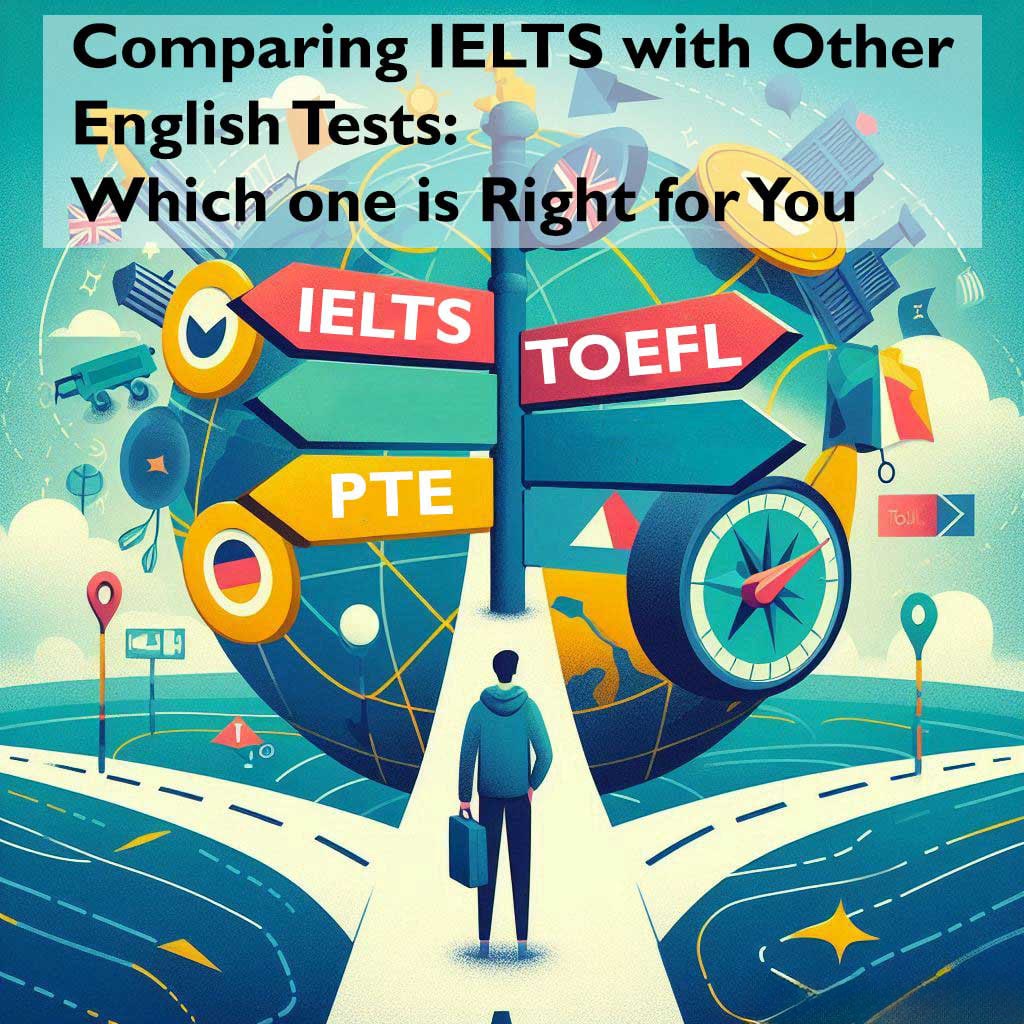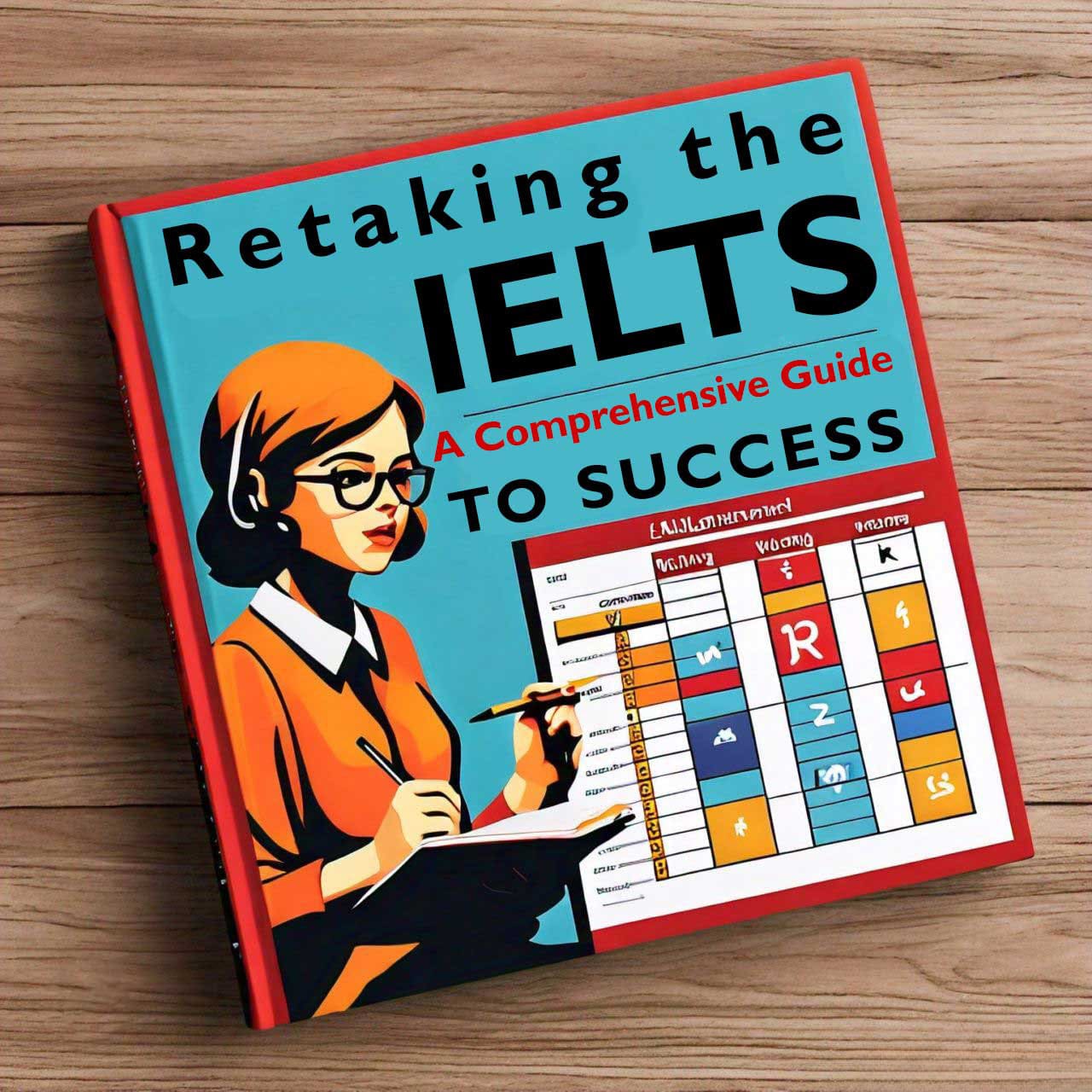In today’s globalized world, proficiency in English is a valuable asset. Whether you are planning to study abroad, migrate to an English-speaking country, or enhance your career prospects, demonstrating your English skills through standardized tests can be a crucial step. Among the various English proficiency tests available, the International English Language Testing System (IELTS) stands out. However, it’s important to understand how IELTS compares with other popular English tests such as TOEFL, PTE, and Cambridge English exams. This blog post will explore these tests in detail to help you make an informed decision.
Table of Contents
IELTS (International English Language Testing System)
Overview:
IELTS is one of the most widely recognized English language tests globally, accepted by over 10,000 institutions in more than 140 countries. It assesses your listening, reading, writing, and speaking skills.
Structure:
– Listening: 30 minutes
– Reading: 60 minutes
– Writing: 60 minutes
– Speaking: 11-14 minutes (conducted as a face-to-face interview)
Scoring:
Each section is scored on a band scale of 0 to 9, and you receive an overall band score.
Pros:
– Recognized by a wide range of institutions.
– The speaking test involves a face-to-face interview, which can be more interactive.
– Offers both Academic and General Training versions.
Cons:
– The test can be perceived as lengthy and demanding.
– The paper-based option may be less convenient for some.
TOEFL (Test of English as a Foreign Language)
Overview:
TOEFL is another widely accepted English proficiency test, particularly popular in the United States and Canada. It is designed to evaluate the English language skills of non-native speakers aiming to enroll in English-speaking universities.
Structure:
– Reading: 60-80 minutes
– Listening: 60-90 minutes
– Speaking: 20 minutes (computer-based)
– Writing: 50 minutes
Scoring:
The test is scored out of 120 points, with each section contributing a maximum of 30 points.
Pros:
– Widely accepted, especially in North America.
– The computer-based format can be more convenient and familiar for some test-takers.
Cons:
– The speaking test involves speaking into a microphone rather than interacting with a person, which can feel less natural.
– The test duration can be quite long, taking up to four hours.
PTE (Pearson Test of English)
Overview:
PTE Academic is a computer-based English language test that is gaining popularity, particularly for its quick results and convenience. It is accepted by many institutions worldwide.
Structure:
– Speaking & Writing: 77-93 minutes
– Reading: 32-41 minutes
– Listening: 45-57 minutes
Scoring:
The scoring scale ranges from 10 to 90 points.
Pros:
– Fast results, often available within 48 hours.
– The test is fully computer-based, which can streamline the testing experience.
Cons:
– Less widely recognized compared to IELTS and TOEFL, though its acceptance is growing.
– The speaking section, conducted via computer, may not suit everyone.
Cambridge English Exams (FCE, CAE, CPE)
Overview:
Cambridge English exams are comprehensive tests that assess your English language skills across various levels. They include exams like the First Certificate in English (FCE), Certificate in Advanced English (CAE), and Certificate of Proficiency in English (CPE).
Structure:
Each exam consists of four papers:
– Reading and Use of English: 1 hour 15 minutes to 1 hour 30 minutes
– Writing: 1 hour 20 minutes
– Listening: 40 minutes
– Speaking: 14-15 minutes (face-to-face interview)
Scoring:
The scoring is based on the Common European Framework of Reference for Languages (CEFR) levels, ranging from A1 to C2.
Pros:
– Offers a detailed assessment at various proficiency levels.
– Recognized by a wide range of institutions and employers.
– Face-to-face speaking test.
Cons:
– Each level requires a separate test, which can be time-consuming and costly.
– The scoring system is different from other tests, which may require additional understanding.
Which Test Should You Choose?
Choosing the right English proficiency test depends on your personal circumstances, including your goals, location, and the institutions to which you are applying. Here are a few considerations:
– University Applications: If you are applying to universities in the US or Canada, TOEFL might be the most appropriate choice. However, IELTS is also widely accepted in these regions and globally.
– Immigration: For immigration purposes, IELTS and PTE are commonly accepted. Check the specific requirements of the country you are applying to.
– Familiarity with Test Format: If you prefer a computer-based test, PTE or TOEFL could be more suitable. For those who perform better in a traditional exam setting, IELTS or Cambridge exams might be better.
– Quick Results: If you need your results quickly, PTE offers the fastest turnaround time.
Conclusion
All these tests have their unique features, advantages, and challenges. Understanding the differences between IELTS, TOEFL, PTE, and Cambridge English exams will help you choose the one that best aligns with your needs and preferences. Regardless of the test you choose, thorough preparation and practice are key to achieving a high score and demonstrating your English proficiency effectively.



